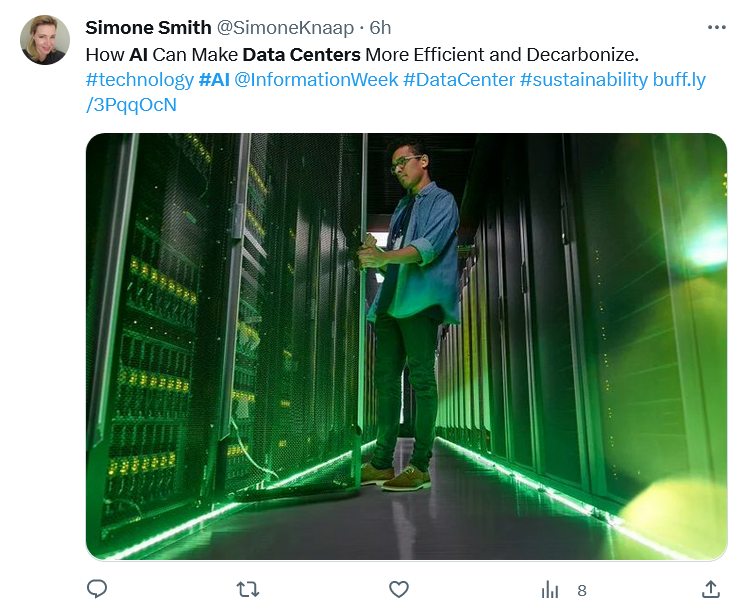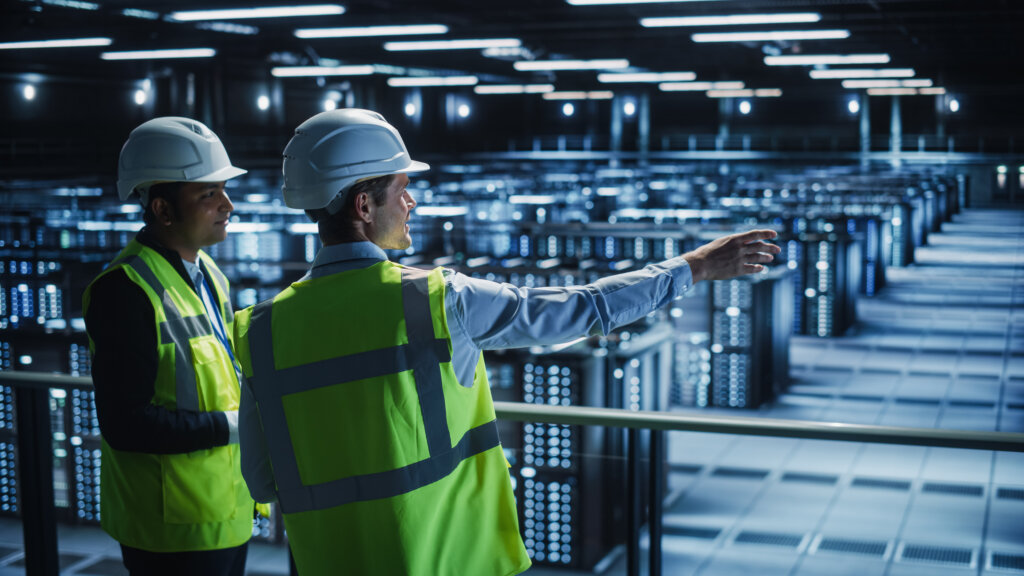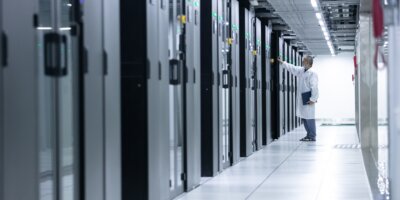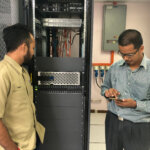
AI is making an impact to transform data centers and meet its demands. (Source – Shutterstock)
How AI and machine learning are transforming data centers
- AI-powered enhancements lead to more efficient cooling and power management in data centers.
- Colocation market expected to hit US$65.2 billion by 2027.
- AI and machine learning in data centers requires hefty investment capacity.
In an era where artificial intelligence (AI) and machine learning are reshaping various industries, their impact on data center management has been transformative. These technologies allow data center operators to effortlessly track equipment performance and make data-driven decisions about equipment replacement.
Amid the media buzz surrounding AI, new research from Omdia underscores an increasing understanding of AI’s practical use cases in the data center market, which extend from augmenting productivity to cost reduction. Multiple data points now suggest that the AI revolution in data centers is far from being a fleeting trend.
The rise of modern colocation services
As AI continues to burgeon, colocation businesses—which span multi-tenant and single-tenant data center providers—are poised to capitalize on this growth. Several firms have modernized their data center layouts to facilitate increased rack power density, a critical requirement for servers configured for AI-driven operations. Such configurations often demand power inputs similar to high-performance computing (HPC) setups, which are primarily used in complex scientific computations.
Alan Howard, Principal Analyst at Omdia, points out that the market will now be more favorable for those colocation providers who can offer maximum rack densities and sophisticated liquid cooling technologies. In his view, these features will give certain providers a competitive edge in acquiring more market share in the data center space.
Future projections from Omdia depict a rosy picture for the colocation market. The industry is projected to grow to a staggering US$65.2 billion by 2027, showing a 5-year CAGR of 9.4%, as highlighted in Omdia’s Colocation Services Tracker for 2023. The pace at which AI hardware is being adopted could also amplify revenue streams for colocation data centers, provided the adoption trends align with the forecasts.
Omdia’s Colocation Services Tracker – 2023. (Source – Omdia)
In a more focused look at geographical regions, the Asia-Pacific (APAC) stands out as a vibrant hub for data center activities. This vitality stems from heightened investment by colocation and hyperscale operators. Several key factors are propelling the industry in the region, including a surge in internet usage, a broad embrace of cloud solutions, high levels of smartphone usage, and a trend among enterprises to shift away from traditional server rooms.
Among APAC countries, China occupies the forefront, largely thanks to its advanced digital transformation and interconnected business landscape. Industry experts predict that China will maintain its leading role in regional investment and expansion of power capacity for the foreseeable future. Meanwhile, Indonesia is gaining attention as a rapidly expanding market within Southeast Asia.
To fuel digital transformation, Indonesia’s government is concentrating on multiple sectors like government digitalization, digital healthcare, online education, and industrial digitization. Incentives in the form of tax breaks are also being implemented to stimulate the digital economy and promote data localization within the nation.

AI and machine learning for smarter data centers is not a rogue idea.
Leading the global colocation service market are three giants: Equinix, Digital Realty, and NTT Global Data Centers . Together, they operate an astonishing 700-plus data centers and are constructing over 100 more, as reported in Omdia’s Data Center Building Tracker for the first half of 2023. These companies alone generated 33% of the sector’s total revenue in 2022, a whopping US$41.6 billion, according to Omdia’s recent tracking data.
While AI and HPC configurations are not universally compatible with all data center setups, many leading and upcoming colocation providers have been proactive in future-proofing their facilities. They are investing in scalable and flexible infrastructure to adapt to emergent technology trends like AI and HPC.
How AI and machine learning are streamlining operations
AI’s influence in data center management is particularly evident in areas like cooling. Traditional data centers often struggle with matching supply to actual demand. Although they can customize servers, racks, and cross-connects based on client requirements, cooling systems usually operate uniformly across the facility, leading to inefficiencies.
In many instances, the same cooling systems overworking to manage heavily-loaded, heat-intensive areas are also cooling less-utilized areas, wasting energy and resources. Such a one-size-fits-all strategy contributes to operational inefficiencies, especially in data centers with fluctuating utilization rates.
Power management in data centers poses similar challenges. While data centers have an allocated power draw from utilities, tracking the usage at the individual unit level is complex. Knowing how much power should be consumed per manufacturing specifications is one thing, but accurately measuring the real-time performance of each unit within a larger system has been near-impossible without AI.

How AI is streamlining data center operations. (Source – Shutterstock)
The advent of AI has made it possible for data centers to optimize power usage in real-time based on the actual needs of the system, something that was nearly unattainable previously, due to the lack of granular data and rapid response capabilities.
Before the integration of AI, the costs and risks associated with constant monitoring and real-time adjustments of power and cooling systems were deemed too high. As such, inefficiencies were often tolerated as a lesser evil compared to the alternative risks and costs.
Building for the future
Data centers built recently, or currently under construction, are specifically designed to house high-power density equipment racks. These designs incorporate elements like advanced power distribution systems and pinpoint cooling solutions for thermal management.
In certain cases, the requirements are even more specialized, involving direct-to-chip liquid cooling systems. Such specialized needs necessitate unique architectural solutions that could involve plumbing designs to facilitate liquid cooling loops, or even the installation of immersion cooling tanks containing non-conductive fluids.
Alan Howard stresses that achieving this level of sophistication in data center operations isn’t for the faint-hearted or companies hesitant to invest heavily. Leading colocation firms like Equinix, Digital Realty, NTT GDC, and others are willing to undertake the capital risks of building these advanced data centers, thereby alleviating the burden for enterprises and cloud service providers.
READ MORE
- Safer Automation: How Sophic and Firmus Succeeded in Malaysia with MDEC’s Support
- Privilege granted, not gained: Intelligent authorization for enhanced infrastructure productivity
- Low-Code produces the Proof-of-Possibilities
- New Wearables Enable Staff to Work Faster and Safer
- Experts weigh in on Oracle’s departure from adland






